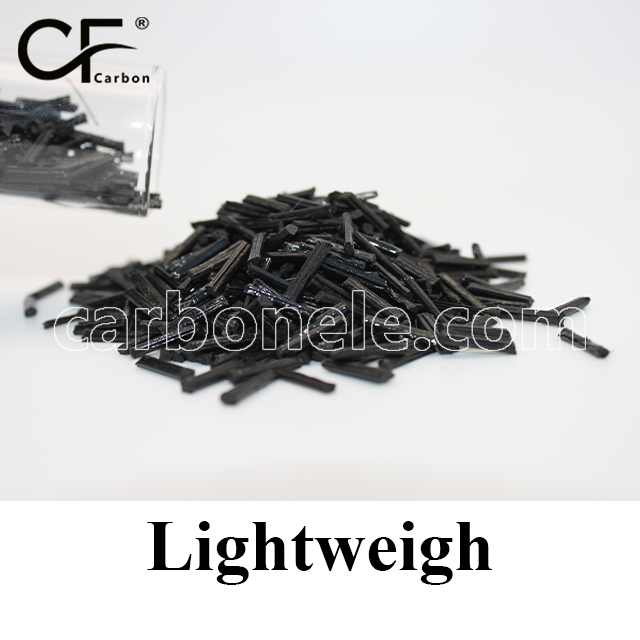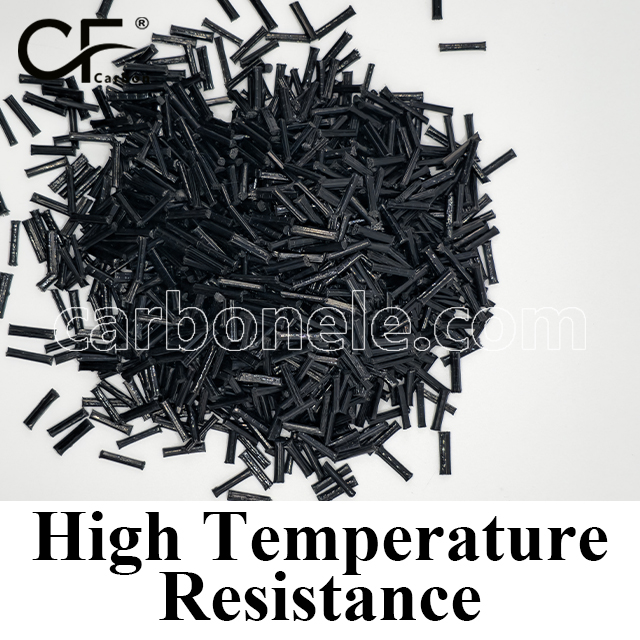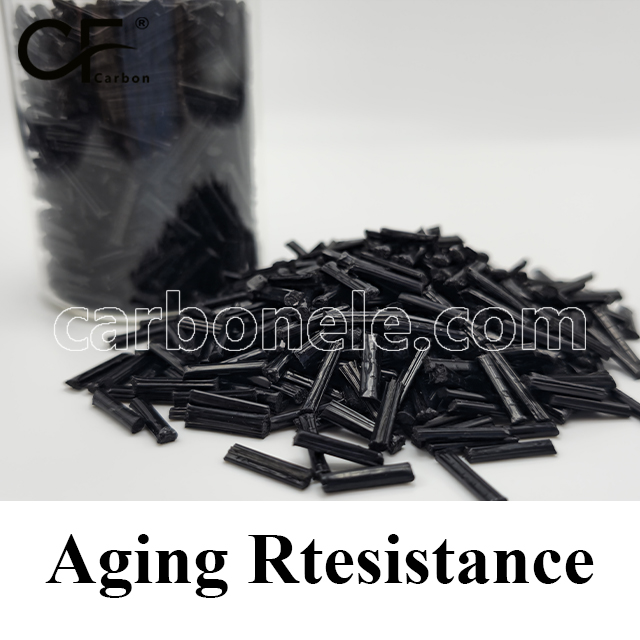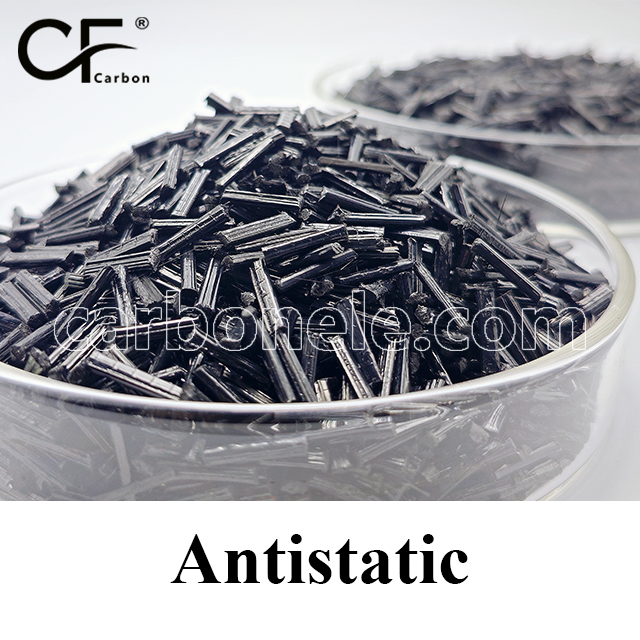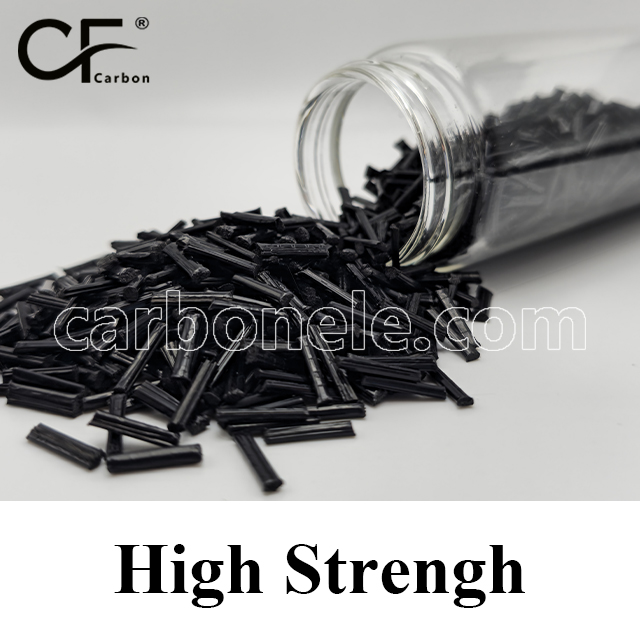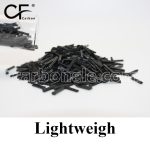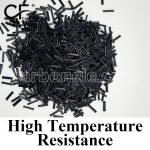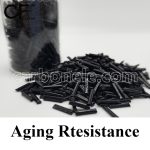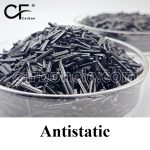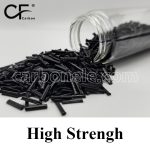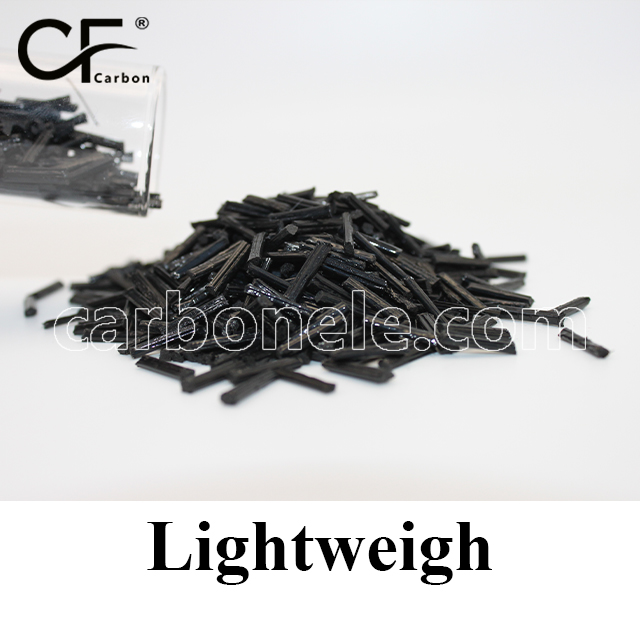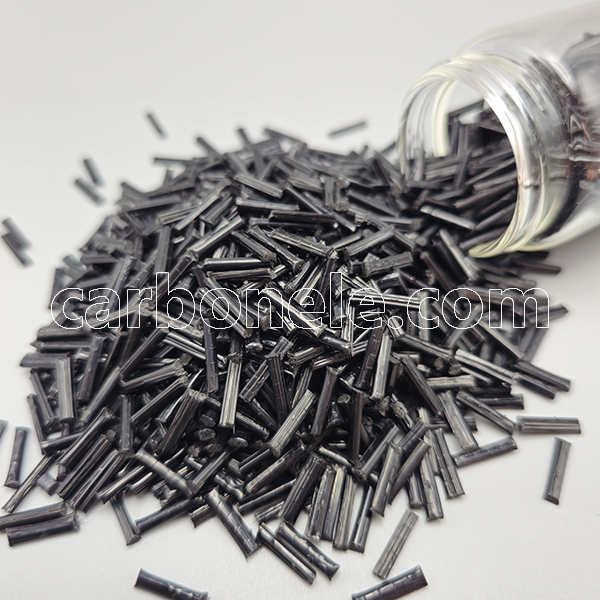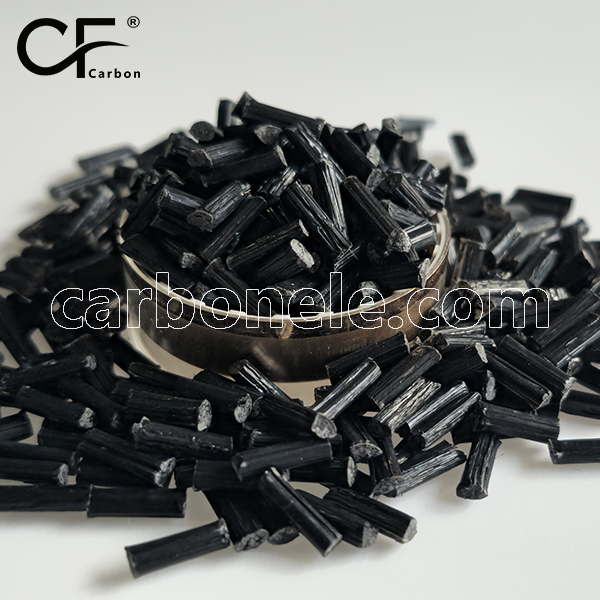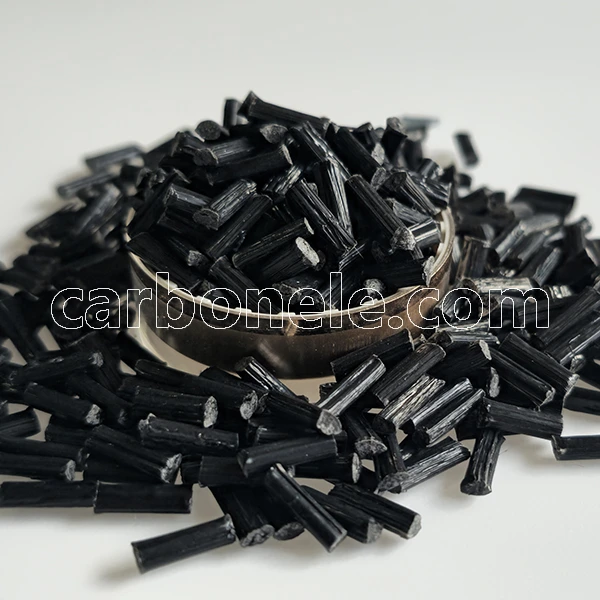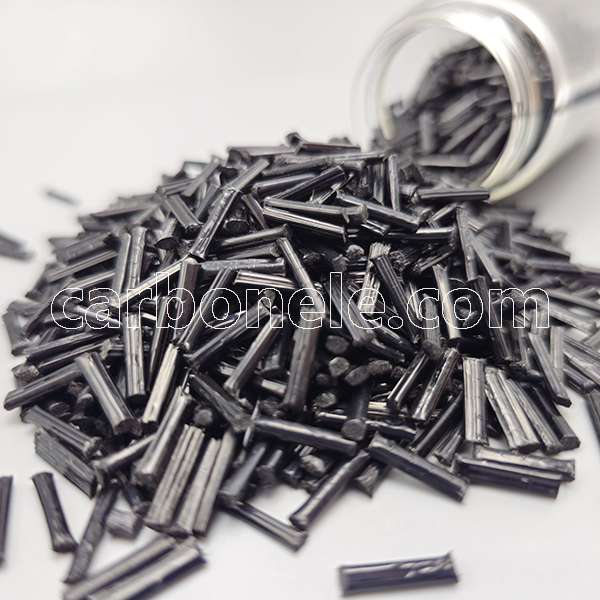
PP-based composite materials PP-LCF60
- Model number: PP-LCF-BAC6
- Matrix Resin: Polypropylene (PP)
- Reinforcing Filler: Carbon fiber
- Appearance: Granules
- Grade: Injection/extrusion grade
- Packaging: 25kgs/bag
Mechanical Properties
PP-LCF60 is a high-performance polypropylene composite reinforced with 60% long carbon fiber, offering exceptional mechanical strength, stiffness, and dimensional stability. The high carbon fiber content significantly enhances durability, making it ideal for demanding structural applications requiring superior load-bearing capacity and lightweight efficiency.
Tensile Strength: ≥ 140 MPa
Flexural Strength: ≥ 180 MPa
Impact Strength: ≥ 13 kJ/m²
With 60% long carbon fiber reinforcement, PP-LCF60 provides outstanding strength-to-weight performance, making it suitable for high-stress industrial, automotive, and aerospace applications.
Thermal and Chemical Resistance
PP-LCF60 exhibits excellent thermal stability and chemical resistance while maintaining high rigidity under extreme conditions.
Heat Deflection Temperature (HDT): Approx. 180°C
Long Term Service Temperature: Up to 165°C
Chemical Resistance: Excellent resistance to oils, weak acids, and solvents; sensitive to strong oxidizing agents
PP-LCF60 ensures long-term performance in environments exposed to high temperatures and chemically aggressive substances.
Wear Resistance and Processing
With its high carbon fiber content, PP-LCF60 offers exceptional wear resistance and reduced friction compared to unreinforced PP, while maintaining good processability.
Wear Resistance: Significantly improved over standard PP
Processing Methods: Injection molding, extrusion
Due to the high fiber content, optimized processing parameters and reinforced molds are recommended for best results.
Environmental Adaptability
PP-LCF60 has extremely low moisture absorption and excellent dimensional stability, ensuring reliable performance in challenging environments.
Water Absorption: Extremely low, minimizing swelling and degradation
Dimensional Stability: High, with minimal expansion or contraction under thermal fluctuations
These properties make PP-LCF60 a preferred material for precision components exposed to humidity and varying temperatures.
Applications
PP-LCF60 is a lightweight, ultra strong composite suitable for applications that demand maximum mechanical performance, impact resistance, and chemical durability. It is widely used in:
Automotive: Structural components, brackets, housings, and interior panels subjected to high mechanical stress and temperature fluctuations.
Industrial Equipment: High strength machine parts and structural reinforcements.
Aerospace: Lightweight, high-durability components requiring superior mechanical stability.
Summary Table for PP-LCF60
| Characteristic | Value/Description |
|---|---|
| Carbon Fiber Content | 60% |
| Tensile Strength | ≥ 140 MPa |
| Flexural Strength | ≥ 180 MPa |
| Impact Strength | ≥ 13 kJ/m² |
| Heat Deflection Temp. | Approx. 180°C |
| Long-Term Service Temp. | Up to 165°C |
| Chemical Resistance | Excellent, but sensitive to strong oxidizers |
| Water Absorption | Very low |
| Processing Methods | Injection molding, extrusion |
| Wear Resistance | Significantly improved over standard PP |
If you want to get more information about PP-LCF60, you can vist our Youtube.
Click here to contact us.
Strength between PP and PP-CF
PP-CF exhibits significantly higher strength and stiffness compared to unreinforced PP due to the addition of carbon fiber reinforcement. While standard polypropylene (PP) is known for its flexibility and impact resistance, it lacks the rigidity and load bearing capacity required for high-performance applications. In contrast, PP-CF enhances tensile strength, flexural modulus, and dimensional stability, making it more resistant to deformation under mechanical stress. This improved performance allows PP-CF to be used in applications where higher strength-to-weight ratio and structural integrity are critical.
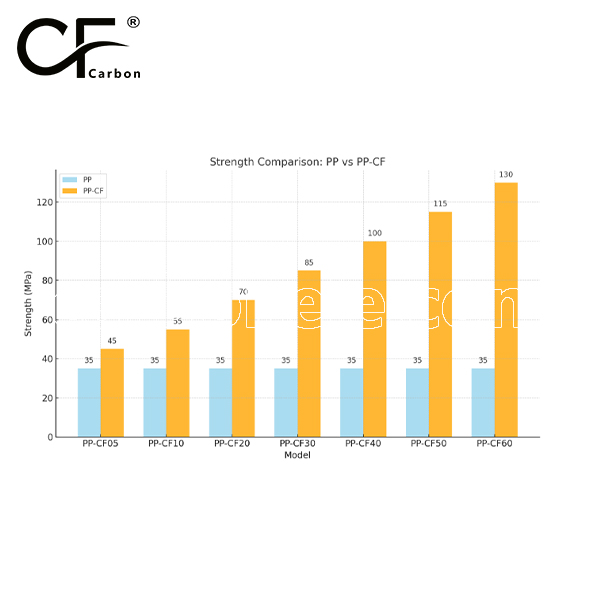
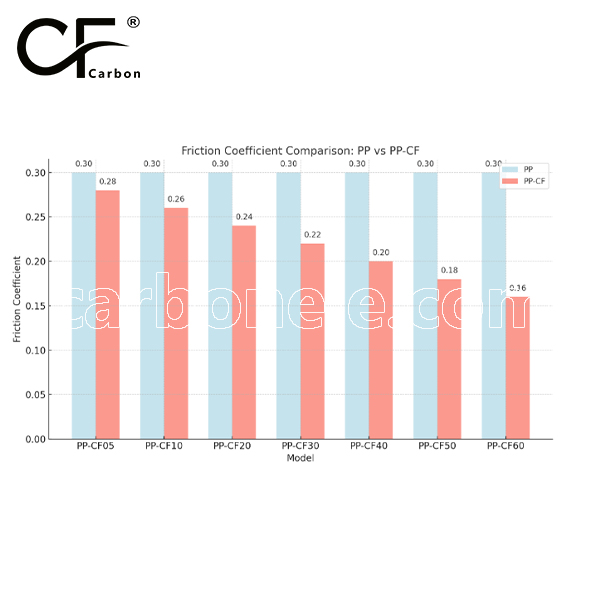

Frequently Asked Questions
Carbon (Xiamen) New Material Co., Ltd. aims to provide buyers with "one-stop" worry-free high-quality services. Here you can find all information about carbon fiber engineering plastics. If you still have questions, please send us an email for consultation!
-
How can I contact the manufacturer of a product that interests me?
When you find a product you are interested in, you can contact the manufacturer directly by sending an email and we will get back to you as soon as possible.
-
How do I find the products that interest me?
All you need to do is enter the keyword, product name in the search window and press the Enter key on your keyboard. Your search results page will then be displayed. You can also search within the product category pages on the home page. Each category is divided into subcategories, allowing you to refine your search and find products that interest you.
-
Where will I find a buying guide?
Please contact our after-sales service directly and we will provide you with a comprehensive operating guide.
-
What are CF Reinforced Thermoplastic Composites?
CF Reinforced Thermoplastic Composites are materials where carbon fibers are incorporated into a thermoplastic matrix. They combine the strength and stiffness of carbon fibers with the processability and recyclability of thermoplastics. For instance, they are used in automotive parts like bumper beams.
-
What are the benefits of CF Reinforced Thermoplastic Composites over traditional composites?
The key benefits include faster production cycles, easier recyclability, and better impact resistance. They also offer design flexibility. An example is in the manufacturing of consumer electronics casings where complex shapes can be achieved more easily.
-
How are CF Reinforced Thermoplastic Composites processed?
Common processing methods include injection molding, extrusion, and compression molding. Injection molding is widely used for mass production. For example, in the production of small components for the medical industry.
-
What industries use CF Reinforced Thermoplastic Composites?
They are utilized in aerospace, automotive, medical, and sports equipment industries. In aerospace, they can be found in interior components. In the medical field, they might be used in prosthetics.
-
How does the carbon fiber content affect the properties of the composites?
Higher carbon fiber content generally leads to increased strength and stiffness but may reduce ductility. A moderate content is often balanced for specific applications. For example, a higher content might be preferred in structural parts of a race car.
-
What are the challenges in using CF Reinforced Thermoplastic Composites?
Challenges include higher material costs, complex processing equipment requirements, and ensuring uniform fiber dispersion. Issues with adhesion between the fibers and the matrix can also arise. An example is in achieving consistent quality in large-scale production.








